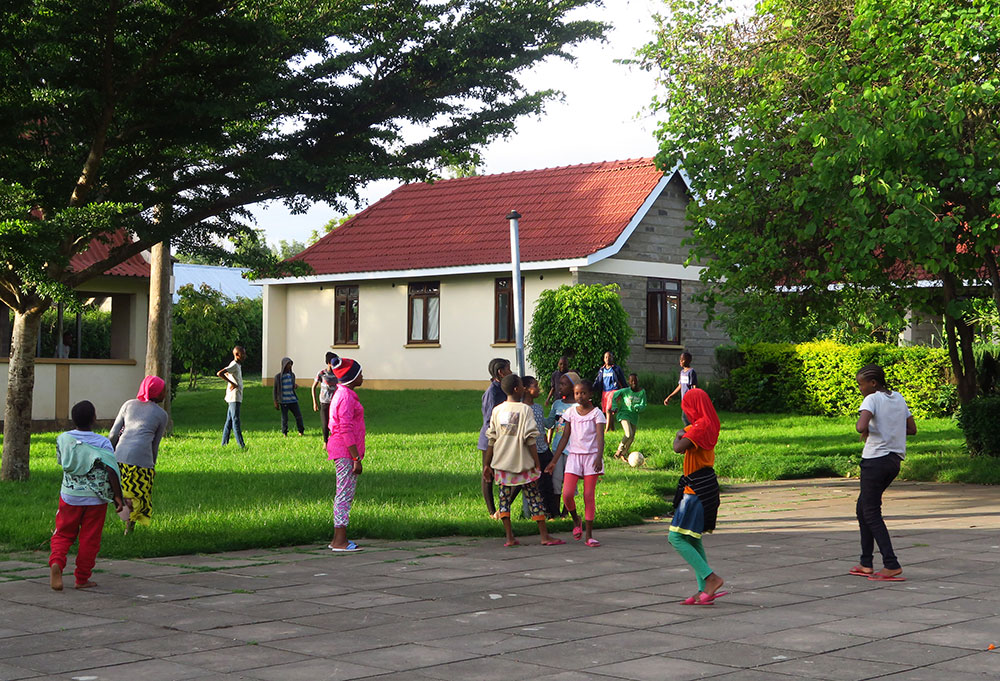Session 16/21
Page 5/6 Play develops with agePlay develops with age
The type of play a child is interested in and motivated for depends on its age. As a child grows older, it will become more creative and experiment more with toys, ideas and objects. It will also be able to concentrate for a longer period of time and might need more time and space to play. Moreover, children will naturally experiment with different forms of play, such as playing alone, playing next to others and playing with others.
Below you can find an overview of activities and play ideas according to the age of a child.

Babies – under 1 year
The best toy a baby knows is its caregiver. Looking at the caregiver’s face and hearing the caregiver’s voice is the best kind of play for babies – especially when it is smiled to.
- Music, songs and instruments develop hearing and movement
- Peek-a-boo teaches the infant to separate from the caregiver without fear. Hide-and-seek with older children does the same.
- Different kinds of objects like feathers, mud, metal develop the sense of touch
- Objects of different shapes, sized and colours encourage the child to reach and grasp and learn what is big and small, heavy or light, smooth or rough, etc.
- Furniture, balls, toys, boxes encourage the child to crawl, stand and walk
- Tummy time and playing on the floor develop physical strength and control
Pre-schoolers – 4-6 years
- Containers, wooden spoons, sticks, buckets, saucepans, old clothes etc. develop imagination and are good for spontaneous play
- Music accompanied by pots or pans is good for dancing, concerts or making up music
- Balls encourage the child to kick, throw, catch, and roll
Toddlers – 1-3 years
Toddlers like exploring their surroundings as well as the capacities of their bodies and physical strength.
- Objects with different weights like balls or buckets encourage the child to run, push, pull or drag.
- Ropes, music, and containers encourage the child to jump, kick, stomp, step and run
- Boxes, large rocks, and pillows encourage the child to climb, balance, twist or roll
- Any type of dress-up game develops imagination and creativity
- Songs, music, and instruments encourage the child to experiment with sound and rhythms
School children – from 7 years
- Furniture, linen, washing baskets and boxes are good for building small hideouts
- Obstacle courses build from different materials like planks, tree stumps, buckets, big rocks etc. encourage the child to move in different ways, directions and speed
- Cooking, food preparation and gardening activities are good for developing numeracy and everyday skills
- Craft activities like beading, plaiting, painting

“I did not know how important play was for my children. Before I think it was difficult to find the time to play and be available and I did not have many toys for my children. But now I take to time to play with them or I am near them when they play and I do house chores. We improvise all kinds of different games with things we find: kites, balls, dolls, counting games, colour games and so on. I really enjoy playing with my children.”
Caregiver
HOW CAN CAREGIVERS PLAY WITH THEIR CHILDREN?
Caregivers can join the child’s spontaneous play. It is a great opportunity for them to see the world from their children’s point of view. Caregivers, who interact with children through play, teach their children that they are fully paying attention and helping them to build relationships. Research shows, that caregivers who engage in play with their children communicate more effectively with their children.
Playing with children is especially important in the toddler and preschool age. Playing with the primary caregiver is important as well as with other adults who have a special relation with the child.
In a busy everyday life with many tasks that need to be solved, it can seem challenging to find the time and energy to play with your children. However, play does not need a fixed time or certain objects or toys. Play is flexible and can be at any place where children can dream and run.
Here are some ideas for activities that are especially suitable for caregivers’ engagement in their children’s play:
- Story reading and nursery rhymes
- Hide-and-seek
- Go for a walk
- Gardening
- Cooking
- Sing songs
- Dance
- Dressing up
- Kicking and throwing balls
- Housework
Some of the daily house chores can easily be turned into play. Take the child with you when you go grocery shopping and look for different animals, listen to the sounds in the street, find different surfaces to walk on etc. You can also involve the child when gardening by making the child dig, or water or play with mud or sand.
Playing should be easy and fun. Here are some guidelines that are important to remember:
- Allow the child to make mistakes. Only many failed attempts will lead to perfection of a skill. Tell this to the child.
- Talk about what the child is doing and appreciate and encourage it’s efforts
- Listen to the child, follow its lead and let it change the game and decide on “rules”
- Make sure the game is safe and not dangerous
- Do not show the child that you do things better. Make your own small mistakes and laugh at them.
ACTIVITY SUGGESTION
For some caregivers it is difficult to find the time to play with their children. Can you organize a day where different families and their children meet to play different games together?

